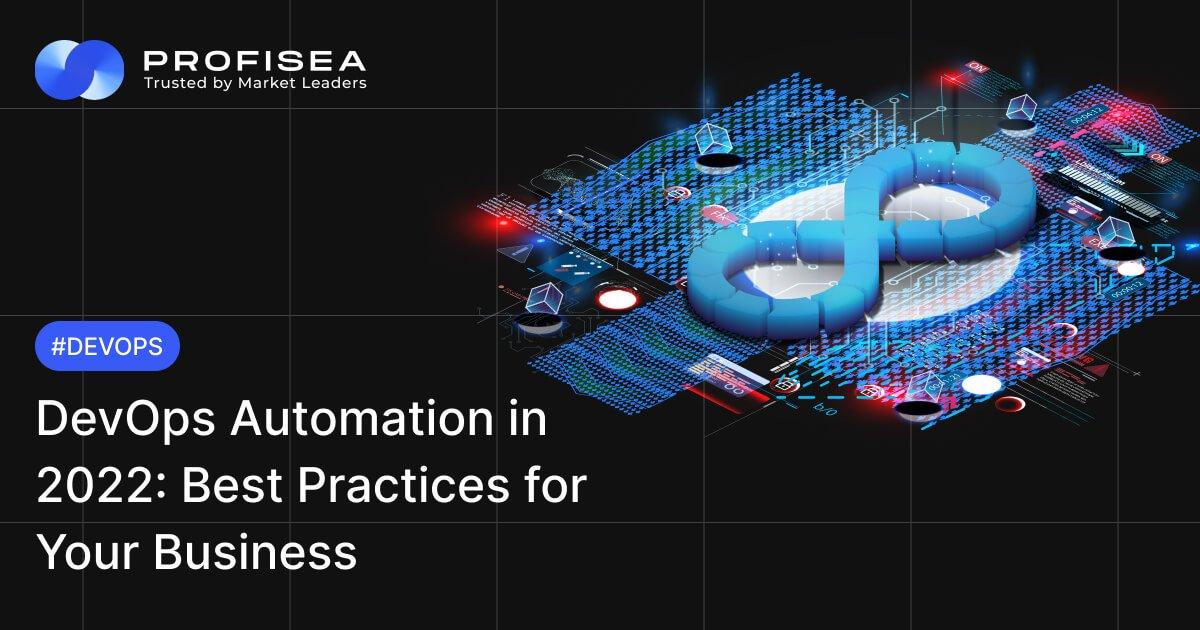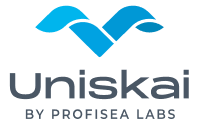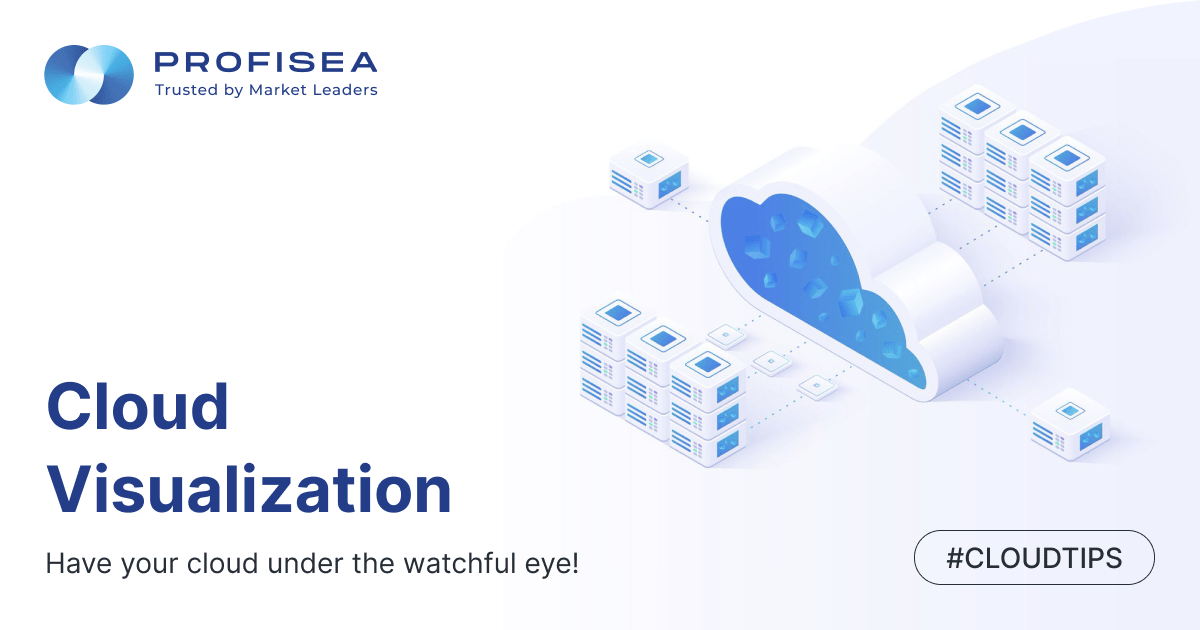DevOps Automation in 2022: Best Practices for Your Business
According to Gartner, IT spending worldwide is forecasted to grow by 5.5% from 2021 to 2022, reaching $4.5 trillion and making the largest year-on-year jump in more than a decade. While many enterprises invest in building new technologies, a lot of IT resources — whether money, time, or top talents — are locked into simply keeping the lights on. Manual handling, time-consuming operational processes, functional silos, plus an overwhelming collection of tools can hamper the ability of IT to meet business needs. When IT is unwieldy and slow, businesses become ineffective and miss new opportunities, encouraging executives to look for alternatives — now widely available due to the rise of cloud service providers and the popularity of DevOps automation practices.
While DevOps automation can work as a catalyst to engineering excellence, not every company can benefit from it. It’s like a jigsaw puzzle: you have thousands of pieces in your hand, but if there is no reference picture, you will struggle to succeed. This is the situation many IT organizations face despite the fact that DevOps automation isn’t a new concept. Many enterprises don’t realize the full benefits of DevOps automation because they don’t have a full picture and so won’t be able to scale it across the organization. So, why should you consider DevOps automation and its benefits? What are the best practices and tools? What makes for good DevOps automation? At Profisea we’ve helped many companies adopt DevOps automation, and this is what we’ve learned along the way.
Why do you need DevOps automation?
Before we dive into best practices, let’s consider a more general question: Why do you need DevOps automation? Automation is an essential part of DevOps transformation since it allows enterprises to enable efficiency, contingency, and reliability within the organization. It also eliminates delays so will free up time for more important goals. Since DevOps methodology first emerged back in 2007, automation has significantly evolved and moved to new areas — from automating delivery, integration, and deployment to using innovative automating approaches to observability, reliability, and remediation. But what are the benefits? Well, that depends on who you ask. Let’s take a look at the advantages from both engineering and business perspectives.
From an engineering perspective, DevOps automation:
- helps development teams become more effective;
- lowers cross-team dependency;
- allows engineers to cut back on manual processes for infrastructure provisioning and configuration by using Infrastructure as Code (IaC);
- improves transparency, leading to higher productivity;
- leaves more ‘mind space’ for creative thinking and innovation;
- improves product quality and increases release frequency;
- helps to get faster feedback.
From the business perspective, DevOps automation:
- reduces lead times for feature deployment;
- increases reliability and availability by automatically finding and fixing errors;
- reduces human error;
- eliminates the need for large teams, saving money for other goals;
- reduces repetitive efforts by different development teams;
- minimizes time wastage;
- offers easy yet effective problem-solving techniques;
- reduces IT costs and increases business value.
However, to fully reap the benefits of DevOps automation, the methodology needs to be properly understood and implemented. You can buy a lot of DevOps tools in the hope of saving time, money, and resources, yet see no results. Why does this happen? Mainly because of the myths and misconceptions about DevOps, as it is not only about new tools, but also about more effective collaboration and communication across the organization.

According to Puppet, the main goal of perfect DevOps automation is to create a self-service system in which:
- incident management is automated;
- resources are available to developers on demand;
- applications are re-architected to meet business requirements;
- design and development teams work in close cooperation with security specialists.
While it may sound too good to be true, organizations should move as closely as possible to this model. Generally, this starts from fixing the common bottlenecks engineers have while releasing and deploying new code to production and continues with looking for ways to automate the operational processes when software is in production. To reduce difficulties in the operational stage, it’s essential to analyze incident data — particularly repetitive incidents — and identify the issues that led to frequent and chronic incidents.
Before deciding what and how to automate, ask your engineering team about the most annoying sources of repetitive tasks. This will help you identify which repetitive and manual tasks are most in need of automation. Here are several common tips to also keep in mind:
1. Prioritize creation of a Continuous Delivery Pipeline (CDP) for releases and improved business agility.
2. Use open standards to simplify onboarding, save time on training and make your DevOps practices more ubiquitous. Community-driven standards for packaging, runtime and configuration are even more crucial when moving to the cloud.
3. Use dynamic variables to make your code reusable and suitable for different environments.
4. Opt for MACH architecture for increased speed, lower risk, and better customizations.
5. Choose flexible tooling to minimize rework and remain effective when your business goals change.
If you are planning DevOps automation, you can also contact our DevOps experts as we have hands-on experience in this field and can offer you the most effective solutions to meet your business needs.
Best DevOps automation practices: what and how to automate
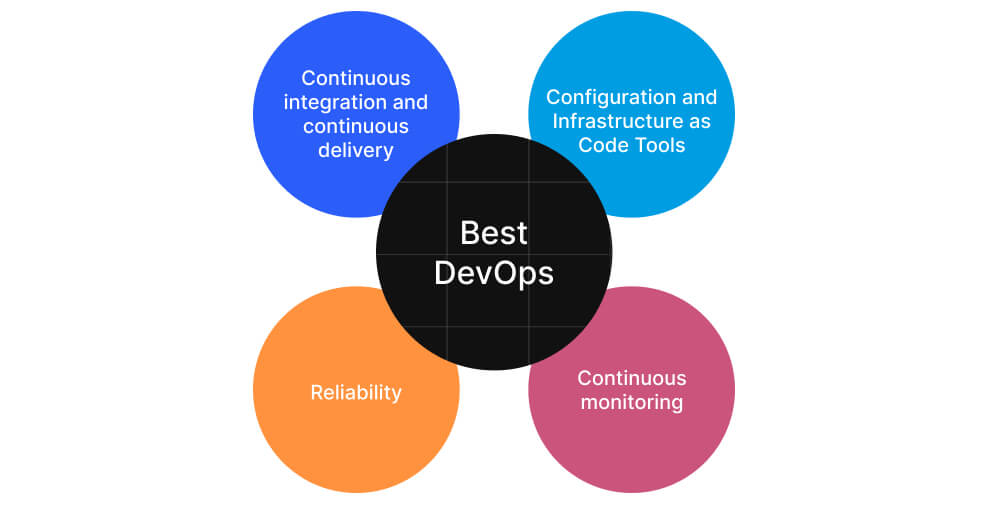
Now that you have a bunch of tips about DevOps automation, it’s time to evaluate which processes we need to automate and which tools exist to manage the various aspects of the software development process. Let’s identify the main areas of automation, the best DevOps automation practices, and the tools available to achieve our goals.
1. Continuous Integration (CI) and Continuous Delivery (CD)
One of the main principles of DevOps is connected with CI/CD. CI and CD let contributors build, test, and deploy code changes safely and consistently. With CI/CD tools, you can have fewer manual processes or even no human intervention at all, while creating a deployment pipeline. This starts from a commit in a version control system, then continues with assessing the code in a series of tests, and if all is OK, it then ends with deployment of the version into production.

2. Configuration and Infrastructure as Code Tools
Having all infrastructure, configuration, and application code stored in a convenient place is another important part of DevOps automation. Configuration and infrastructure as code are practices that allow engineers to reduce manual processes, eliminate errors and apply similar principles of auditing to infrastructure code as they do to application code.
There are several aspects and types of tools we need to mention here.
Infrastructure provisioning. It means provisioning various infrastructure components (for example, network components, virtual machines, and managed services) from code. While infrastructure provisioning in the Cloud might be complicated and error-prone due to the manual building of scripts, IAC helps to do it automatically, saving time and effort.
Configuration management. To make your work effective, you must configure the operational system, software requirements, package dependencies, and system files on the machines.
Container technology. Using containers isn’t a new trend in the IT world. According to the IBM survey, 61% of respondents who have already adopted containers said they were using containers in 50% or more of the new applications they created throughout the previous two years; 64% of container users anticipated 50% or more of their existing applications to be transformed with containers during the next two years. Containers are lightweight, faster, and easier to manage and automate, especially in the combination with the right tools.
Serverless functions. Here, we also have some approaches to automate and deploy the serverless function in the most effective way.
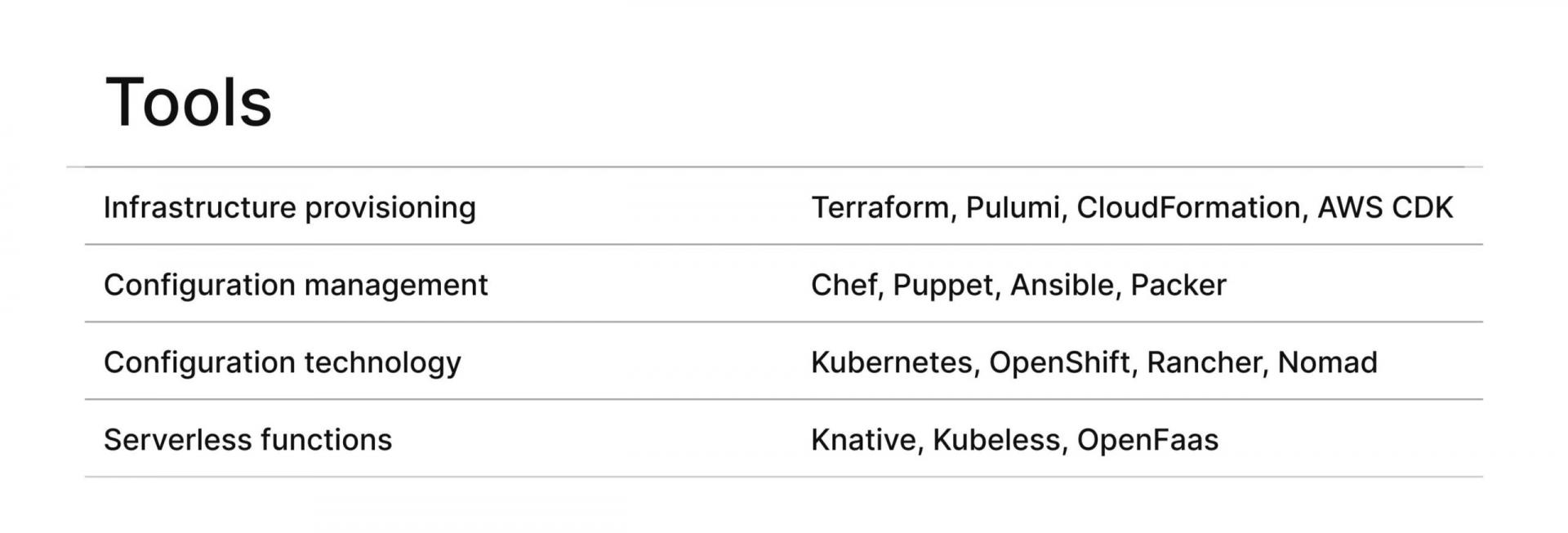
Tools vary widely depending on the technology stack and business problems they are expected to solve. Experienced DevOps specialists can mix tools and create the best combination to achieve infrastructure and configuration as code. When choosing tools for your organization, be sure they allow your engineers to deploy infrastructure in a trouble-free and safe manner.
3. Continuous monitoring
Like CI and CD, Continuous Monitoring (CM) plays a huge role in DevOps automation. It allows monitoring of performance and the stability of applications and infrastructure during the software lifecycle and helps operation teams to get valuable insights and data to troubleshoot. For engineers, it delivers the information needed to debug and patch.
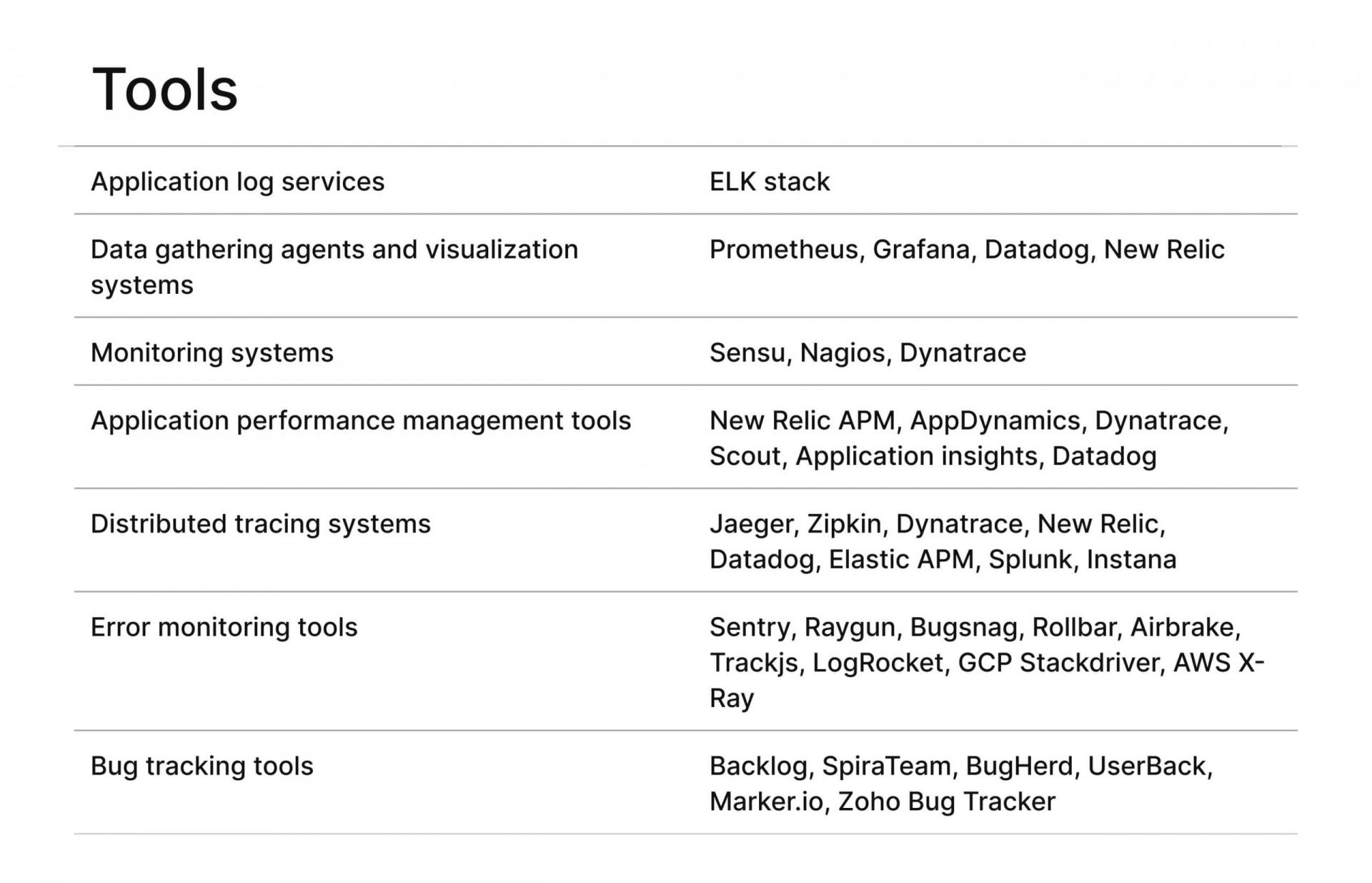
4. Reliability
Reliability and resilience are crucial elements of DevOps automation as they help organizations stay ahead of major issues and thrive in the dynamic business environment. Reliability and resilience tooling is booming, offering new innovative solutions to automate the organizational incident process of on-call management, incident process management, and remediation.

At this point, we’ve learned a lot about DevOps automation, but is it possible to go too far by going for ALL those best practices? Well, yes, as some organizations, unfortunately take DevOps to an extreme.
David Linthicum, Chief Cloud Strategy Officer at Deloitte Consulting LLP, says that many enterprises in an attempt to automate development processes link together too many tools and practices, which leads to over-automating. Too much automation has many hidden risks and can result in all sorts of negative outcomes. So how does one strike a balance and reach DevOps heaven? At Profisea, we know all the secrets of effective and seamless DevOps automation.
Bottom line: automate with Profisea
While DevOps automation promises numerous benefits, it can be a serious challenge. With many expensive tools for automation and DevOps vendors that offer prospects of making you the next Facebook or Netflix, you need to find your unique approach. This is where Profisea comes to help. We are experienced professionals knowledgeable in all areas related to Cloud Computing and DevOps. We also have years of experience under our belts and numerous successful projects and happy clients.
We help big and small businesses to grow and excel using cloud technologies and innovative DevOps practices. Whether you plan to move to the cloud, implement DevOps automation or improve your existing DevOps practices, we are ready to take on any challenge and support you along the way. So, don’t hesitate and book a free assessment to take your business to the next DevOps level.
